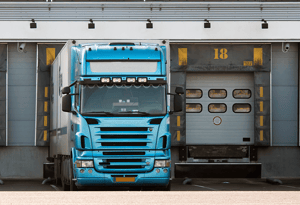Idling Technology: A Clearer Perspective

 It’s common knowledge that excessive idling isn’t good for the bottom line or the environment, but what you may not know is just how costly and harmful it can be. To get a clearer perspective, take a look at these statistics:
It’s common knowledge that excessive idling isn’t good for the bottom line or the environment, but what you may not know is just how costly and harmful it can be. To get a clearer perspective, take a look at these statistics:
- Idling vehicles waste more than six billion gallons of diesel fuel and gasoline annually.
- Medium-duty vehicles use about 2.5 billion gallons of fuel each year just to idle, or 6.7% of the total amount of fuel they consume.
- For heavy-duty vehicles, an hour of idling equates to around 80 miles of engine wear and tear.
- Idling cars and trucks produce 130,000 tons of carbon dioxide each year in New York City alone.
While it’s true that idling is sometimes unavoidable, what’s also true is that the benefits from reducing idling are considerable, including substantial savings on fuel and maintenance, extended vehicle life, compliance with laws and ordinances, and a reduction in harmful emissions.
The good news for fleets is these benefits can be realized by adopting idle reduction technologies that minimize idle time.
Idle reduction technologies encompass a wide variety of equipment and devices that are either installed or retrofitted on vehicles. How they minimize idle time is simple…they provide an alternate energy source — electrical — to replace the idling engine that would normally be used to power the electrical loads of the vehicle. Reduction times vary depending on the technology, system design, duty and drive cycle of the vehicle (how the vehicle is used and how much it is used) and vehicle class — light, medium, or heavy duty.
For purposes here, we’ll focus on technology for medium-duty, such as utility vehicles.
Idle Reduction Technologies to Consider for Medium-Duty Vehicles
Drivers who operate medium-duty vehicles idle for various reasons, including powering hydraulics and equipment, warming the engine, or providing heat, AC or ventilation while working in their vehicles. Idle time can vary from a few minutes to several hours, which is often the case for utility vehicles that park for extended periods and need power to operate equipment.
Idle reduction technologies to consider for medium-duty vehicles include:
- Air Heaters: Used for driver comfort, air heaters operate on engine fuel, but are more efficient, separate, and self-contained units that blow hot air directly in the interior of the vehicle.
- Coolant Heaters: Mounted in the engine compartment, coolant heaters use the vehicle’s heat-transfer system to draw gasoline or diesel from the fuel tank to heat the vehicle’s coolant and pumps it through the engine, radiator and heater box. They’re used to keep the engine warm, reduce the impact of cold starts and warm the cab.
- Waste-Heat Recovery Systems: Similar to a coolant heater, but without a separate heater, waste-heat recovery systems utilize a small electric pump connected to the water line and are used to keep the vehicle and the cab warm. The pump keeps the cooling and heater system operating after the engine is turned off and uses engine heat that would otherwise dissipate.
- Battery/Auxiliary Power Systems: For vehicles that require power take-off — taking power from a power source — throughout the day, a secondary power plant, storage battery or hydraulic storage system can be an ideal solution. For example, a battery can be mounted in the back of the vehicle, charged overnight and, if needed, recharged during the day. Or, an auxiliary power unit equipped with a diesel engine (just like a generator) works as the vehicle’s main diesel engine would work, only producing fewer emissions and using less fuel.
With fleet technologies always evolving, idle reduction hasn’t been left on the sidelines, with new systems emerging -- with enhanced functionality -- that provide even greater benefits, while also improving work conditions for drivers .
One is a hybrid system that’s retrofittable, operates quietly, and allows utility vehicles to become state-of-the-art plug-in hybrid vehicles. It can operate the boom, lights and flashers and has the option to run heat and AC in the cab and exportable power without turning on the engine, saving an impressive 1,200 gallons of fuel per year.
There are also mobile power systems that operate service and utility vehicles’ auxiliary and hydraulic electrical loads, including heat and AC, beacon lights, power tools, computer, camera, radio, and boom, without engaging the vehicle’s primary engine. One such system self-charges as the vehicle is driven via the alternator, has emergency jump-start capability so that drivers are never stranded with a dead battery, and features a custom-designed client dashboard for fleet managers to track system performance and analytics.
With fuel costs unpredictable, maintenance costs on the rise and EPA regulations tightening, idle reduction technologies are certainly worth looking into. Idle reduction solutions are available for every need and budget. While they help reduce fuel and maintenance costs and cut emissions, what should not be overlooked is that they allow drivers to concentrate on their job and not on managing idling. That’s a very good thing for productivity.
Are you interested in learning more about fleet management best practices and technology? Check out our Fleet Management Best Practices guide here.